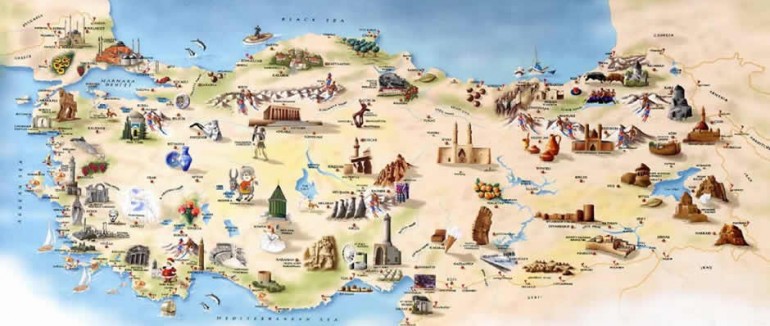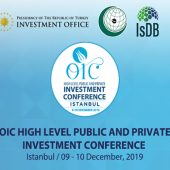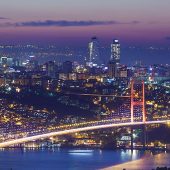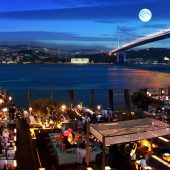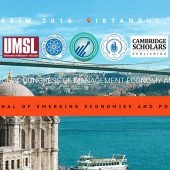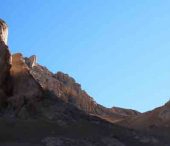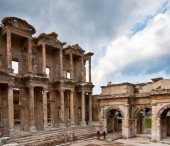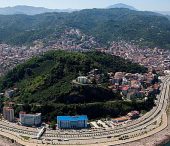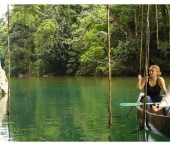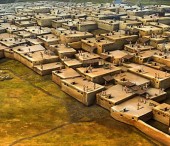Turkey is considered to be one of the richest countries in terms of archaeology and is by far the biggest "open air museum" of the world. It has always been a bridge between the East and West and has been noted by scholars as the "melting pot" of various cultures where classical culture was shaped. From the first known urban city settlement of "Çatalhöyük" to the historically famous Troy and from the Ionians (the Anatolian Greeks) to the greatest empires of the world, the Roman, Byzantine, and Ottoman, many cultures were established and indeed flourished in and around this huge "melting pot". Today, a traveler to Turkey can observe the features of all of these cultures. Not only are they visible in their marvelous remains, but in their impacts on the daily lives of Turks today, which differs greatly from one area to another.
In the 11th century, under their leader Tugrul, the Seljuk Turks founded the dynasty of great Seljuks reigning in Iran, Iraq and Syria. In 1071, his nephew Alp Arslan defeated the Byzantines in Malazgirt, near Lake Van. The doors of Anatolia were thus opened to the Turks, and Anatolia went through a profound transformation ethnically, politically, and in the religious, linguistic and cultural spheres. The Seljuk Sultanate in Anatolia continued until the beginning of the 14th century. The zenith of the Seljuk civilisation came in the first half of the 13th century with Konya as its political, economic, religious, artistic and literary centre. The Seljuks created a centralised administration organised around the Sultan, his ministers and provincial governors. Science and literature blossomed, as did mystic poetry. Anatolia was crossed by the great routes linking the east and west, and many of the caravanserais built along these routes still stand today. Agriculture, industry and handicrafts expanded and the country was suddenly rich in mosques, madrasahs (medreses - educational institutions) and caravanserais (kervansarays - roadside inns).
The Seljuk Sultanate collapsed due to internal dissent and Mongol invasions. Anatolia was again fragmented into rival independent principalities, one of which came under Ottoman rule. Anatolia, though divided, had been united by language, religion and race, offering an opportunity for statesmanship and courage. This would be the task of Osman and his successors.
In 1296, Osman declared himself the independent Sultan of the region of Söğüt near Bursa he had hitherto held in fief, and founded the Ottoman State. During the rule of his son Orhan, Bursa and Iznik were captured and soon the whole south-eastern coast of Marmara was under Ottoman control. The many conquests and diplomatic successes of Orhan were not the only achievements of his reign. He had encouraged and promoted art, literature, science and commerce. He also established a regular standing army, known as the Janissaries. Well paid and disciplined, the Janissaries provided the new Ottoman state with a patriotic force of trained soldiers.
Built upon such solid foundations, the Ottoman Empire spread apace. In the reign of Murat, this expansion was still in a westerly direction and it was not until the frontiers were extended to the Adriatic, the Danube and Thessaly, that the Sultan turned his attention towards Eastern Anatolia Now that his rule was established in Europe and Asia, Beyazit turned towards Constantinople in 1402. The city was almost within Iris grasp when he was called to meet me westward march of Timurlane which delayed the conquest of Istanbul for several decades.
In 1453, under Mehmet the Conqueror, the .s took Constantinople, a momentous event for the whole world and a great feat of arms. But the banner of Ottoman success was to be raised much higher and by the late l6th century the Ottomans were deep into Europe. In the following centuries, however, the Ottoman Empire lost its momentum, entered a period of stagnation and then gradually a period of decline.
Against this challenge, the Turkish nation engaged in a struggle to restore her territorial integrity and independence, to repulse foreign aggressors, to create a new state, to disassociate Turkey from the crumbling Ottoman dynasty, to eradicate an old and decrepit order and to build a modern country dedicated to political, social and economic progress. This was the vision of Atatürk, a general in the Ottoman army who had distinguished himself in the defence of Gallipoli (Çanakkale) against the Naval Forces of Britain, France, Australia and New Zealand. The Ottoman victory over the Allies at Gallipoli renewed Turkey's visions for the empire Atatürk wanted a clean break with the past, to unite the nation in the quest for modernism and to lift Turkey to the level of European countries. On October 29 1923, the republic was proclaimed and Atatürk was elected president. Secularism was established by separating religious and state affairs. The Latin alphabet replaced the Arabic script and women were given the right to vote and to be elected as members of parliament. These reforms, as well as many others in all aspects of social life, put Turkey on the track towards becoming a thoroughly modern country.
When Ataturk died in 1938, he left a legacy of which the Turkish people today are proud. A nation that had regained confidence in itself after the independence war; a society determined to preserve the political, intellectual, cultural and social values he had bequeathed. The Turkish Republic has now been a member of the international community for over 80 years. During this period, great changes have occurred and many difficulties have been encountered. But the country remains firmly attached to the policies initiated by Ataturk. It has established a democratic multi-party political system, developed a vibrant civil society, and embarked on the path of industrialisation and market economy. It has consolidated its ties with the west and with the European Union through membership in NATO and the Council of Europe and Customs Union. These trends mark a radical change from the days of the Ottoman Empire. Yet there is also continuity. The Turks have inherited both from the Islamic past and their Ottoman past. They have also inherited from their western past, as well as forming a part of the Western present. All these heritages, Eastern and Western, Asian and European, are intermingled in the civilisation of modem Turkey. A symbol of this union is the two bridges that span the Istanbul Strait, linking the two continents with many pasts and one future.And Turkey is a candidate country negotiating with European Union for being a member of EU. A Turkish government agency; General Secretariat of European Union is responsible for the negotiations.
Sources: http://goturkey.com/

